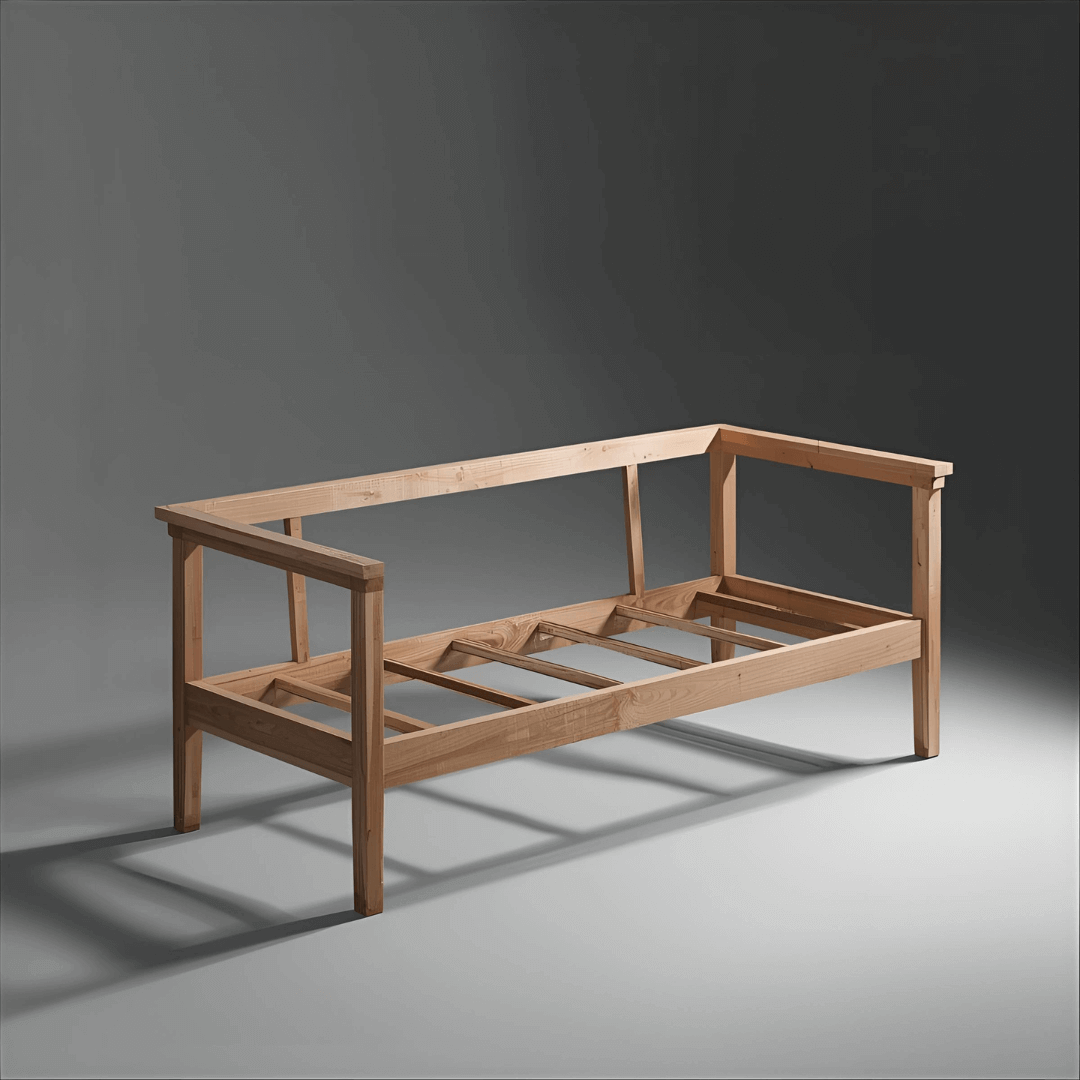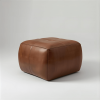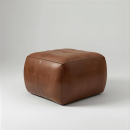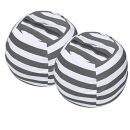
Choosing the right wood for your sofa frame can make all the difference between a piece that lasts for years and one that quickly falls apart. You want a frame that’s strong, durable, and comfortable to support your daily relaxation.
But with so many wood options out there, how do you know which one is best for your sofa? This guide will help you understand the key types of wood used in sofa frames and how each affects your comfort, style, and budget.
Keep reading to find the perfect wood that matches your needs and makes your sofa a lasting centerpiece in your home.
Top 10 Best Wood For Furniture
Choosing the right wood for a sofa frame is crucial for durability and style. Different types of wood offer various strengths and looks. This guide covers the Top 10 Best Wood for Furniture to help pick the best material for your sofa frame. Knowing the difference between hardwoods and softwoods makes better decisions for long-lasting furniture.
Hardwoods
Hardwoods come from deciduous trees that lose their leaves each year. They are dense, strong, and ideal for sofa frames because they resist wear and damage well. Hardwoods provide excellent support and last longer. Many hardwoods also have beautiful grains, adding charm to furniture.
Common hardwoods used in furniture include:
- Oak: Very strong and heavy, with a classic look.
- Maple: Hard and smooth, great for modern styles.
- Walnut: Dark, rich color with good strength.
- Cherry: Smooth texture and warm reddish tone.
- Mahogany: Durable and elegant, often used in high-end pieces.
| Hardwood | Strength | Appearance | Price |
|---|---|---|---|
| Oak | High | Light to medium brown, visible grain | Moderate |
| Maple | High | Light, fine grain | Moderate |
| Walnut | Medium-High | Dark brown, rich texture | High |
| Cherry | Medium | Reddish brown, smooth | High |
| Mahogany | High | Deep reddish-brown, smooth | High |
Hardwoods are best for sofa frames because they handle weight and daily use well. They keep the sofa stable and look great for years.
Softwoods
Softwoods come from evergreen trees and are generally lighter and less dense than hardwoods. They cost less and are easier to work with. Softwoods can be a good choice for sofa frames if treated properly.
Popular softwoods used in furniture include:
- Pine: Light, affordable, easy to paint or stain.
- Cedar: Naturally resistant to insects and decay.
- Fir: Strong but lighter than hardwoods.
- Spruce: Lightweight, often used in budget furniture.
- Redwood: Durable and resistant to moisture.
| Softwood | Strength | Appearance | Price |
|---|---|---|---|
| Pine | Low-Medium | Light yellow, knots visible | Low |
| Cedar | Medium | Reddish, aromatic wood | Moderate |
| Fir | Medium | Light brown, straight grain | Low |
| Spruce | Low | Whitish, fine-grained | Low |
| Redwood | Medium | Reddish-brown, smooth | Moderate |
Softwoods work well for lighter or decorative sofa frames. Proper treatment prevents damage and adds life. They are a budget-friendly option with a warm look.
Benefits Of Hardwood Frames
Choosing the right wood for a sofa frame is crucial for its lifespan and comfort. Hardwood frames offer many benefits, making them a top choice for high-quality sofas. These woods come from deciduous trees, known for their dense and strong fibers. This density gives hardwood frames excellent support and stability. They can handle daily use without losing shape or breaking down easily.
Hardwood frames also improve the sofa’s overall value. The strength of hardwood means the sofa will last longer. This makes hardwood a smart investment for anyone wanting a long-lasting piece of furniture. Below, we explore key benefits of hardwood frames, focusing on their durability and resistance to wear and tear.
Durability And Strength
Hardwood frames provide unmatched durability and strength compared to softwoods or particle boards. The dense fiber structure of hardwood makes it very tough. This toughness supports heavy weight and constant use over many years.
Key durability features of hardwood frames:
- High load-bearing capacity: Supports heavy cushions and multiple users without sagging.
- Resistance to warping: Maintains shape even in changing humidity and temperature.
- Strong joints: Hardwood holds screws and nails firmly, preventing loose parts.
Here is a comparison of hardwood and softwood frame strengths:
| Feature | Hardwood Frame | Softwood Frame |
|---|---|---|
| Density | High | Low |
| Strength | Very strong | Moderate |
| Warp Resistance | Excellent | Poor |
| Longevity | 10+ years | 5 years or less |
Durability means less repair and replacement cost. Hardwood frames offer peace of mind for long-term use. They support both comfort and stability perfectly.
Resistance To Wear And Tear
Hardwood frames resist wear and tear better than other materials. Daily use can cause damage, but hardwood stays strong. It does not crack, chip, or weaken easily.
Why hardwood resists wear and tear:
- Dense fibers: Hard to dent or scratch, keeping the frame intact.
- Natural oils: Some hardwoods contain oils that protect against moisture damage.
- Stable structure: Less prone to splitting or loosening over time.
Hardwood frames handle rough treatment well. Kids jumping or heavy furniture placed on the sofa won’t damage it quickly.
Here is a quick list of hardwood types known for wear resistance:
- Oak
- Maple
- Walnut
- Beech
Using hardwood for sofa frames keeps sofas looking good longer. The frame prevents early damage and extends the sofa’s life. It is a smart choice for families and busy households.
Popular Hardwood Choices
Choosing the right wood for a sofa frame is a sturdy and long-lasting piece of furniture. Hardwood is often preferred for its strength and durability. Among the many hardwoods, some stand out for their quality and beauty. These popular hardwood choices balance toughness, appearance, and workability. They create sofa frames that can support weight and last for years, all while looking great in any room.
Oak
Oak is a classic choice for sofa frames. It is very strong and resists wear well. Oak has a coarse grain that adds a rustic charm to furniture. It comes in two main types: red oak and white oak. Both are hard and durable, but white oak is slightly more water-resistant. Oak is easy to work with and holds nails and screws firmly.
- Durability: High resistance to dents and scratches
- Appearance: Light to medium brown color with visible grain
- Weight: Heavy, which adds stability to the sofa
- Cost: Moderate, affordable for most budgets
Oak is a popular choice because it offers a good balance of beauty and strength. It fits well in traditional or modern settings. Oak frames last long and keep the sofa firm and steady.
Maple
Maple is another popular hardwood for sofa frames. It is known for its smooth, fine grain, and light color. Maple wood is very dense and strong, making it perfect for furniture that needs to last. It resists shocks and dents well, so the sofa frame stays solid over time.
| Feature | Details |
|---|---|
| Hardness | Very hard and durable |
| Color | Light cream to pale reddish-brown |
| Workability | Good for carving and shaping |
| Cost | Moderate to high |
Maple frames offer a clean, modern look. The wood finishes well with stains or paint. Its strength supports heavy use and weight. Maple is a smart choice for sofas needing a durable frame with a smooth finish.
Mahogany
Mahogany is a top hardwood for fine furniture, including sofa frames. It has a rich reddish-brown color that deepens with age. Mahogany is strong but also easy to work with. It sands smoothly and takes stain beautifully, giving a luxurious look.
- Strength: Very strong and stable, resists warping
- Appearance: Warm reddish tones with a straight grain
- Durability: Long-lasting, resists decay
- Cost: Higher than oak or maple
Mahogany frames bring elegance and durability to sofas. It is ideal for those who want a classic, rich look. The wood’s strength ensures the sofa frame stays solid for many years.
Walnut
Walnut is prized for its deep color and beautiful grain. It ranges from rich chocolate brown to lighter tones. Walnut is strong and stable, making it a good choice for sofa frames that must hold up to daily use.
| Feature | Details |
|---|---|
| Durability | Strong and resistant to wear |
| Grain | Smooth with unique patterns |
| Workability | Easy to shape and finish |
| Cost | High-end, more expensive |
Walnut adds a rich, natural beauty to any sofa frame. It is perfect for those who want a blend of luxury and strength. The wood ages well and maintains its charm over time.
Softwood Options And Their Uses
Choosing the right wood for a sofa frame affects its strength, durability, and look. Softwood options are popular because they are lighter and often cost less than hardwoods. They work well for many furniture styles and offer good support when built properly. Understanding the uses and qualities of common softwoods helps in picking the best one for your sofa frame.
Pine
Pine is one of the most common softwoods used in furniture making. It is easy to shape and has a light color with a smooth grain. Pine is affordable and widely available, making it a favorite choice for sofa frames.
Its main benefits include:
- Lightweight: Easy to move and handle during construction.
- Workability: Cuts and sands smoothly, allowing detailed designs.
- Cost-effective: Lower price compared to many hardwoods.
- Good strength: Strong enough for sofa frames with proper joinery.
Despite these advantages, pine is softer than hardwoods. This means it can dent and scratch more easily. To protect the frame, pine sofas often get extra support inside or are finished with tough coatings.
| Property | Details |
|---|---|
| Density | About 350-500 kg/m³ |
| Durability | Moderate, needs finish protection |
| Cost | Low to medium |
| Appearance | Light color, straight grain |
Use pine frames for casual or rustic sofa designs. It suits light to medium use areas well.
Cedar
Cedar is a softwood known for its natural aroma and resistance to pests. Its reddish color and fine grain add a warm look to furniture. Cedar is less common in sofa frames but offers unique benefits.
Key features of cedar include:
- Natural resistance: Fights decay and insect damage.
- Lightweight: Easy to handle and move.
- Stable: Resists warping and shrinking over time.
- Distinct color: Adds beauty to visible frame parts.
Cedar is softer than pine and can dent under heavy use. It suits sofas that do not get heavy daily wear. Its pleasant smell also helps keep furniture fresh.
| Property | Details |
|---|---|
| Density | About 320-370 kg/m³ |
| Durability | High natural resistance to decay |
| Cost | Medium |
| Appearance | Reddish tone, fine grain |
Cedar works well for sofa frames in dry environments or light-use areas. Its natural protection reduces the need for chemical treatments.
Wood Quality Factors To Consider
Choosing the right wood for a sofa frame means understanding key wood quality factors. These factors affect strength, durability, and lifespan. The wood o daily use without bending or breaking. The quality depends on grain, density, moisture, and sustainability. Each plays a vital role in making a strong, lasting sofa frame.
Grain And Density
The grain of wood shows how its fibers grow. Straight grain usually means stronger wood. It resists warping and cracking better than wavy or irregular grain. Grain also affects the sofa’s look. Tight, uniform grain gives a neat finish.
Density means how heavy the wood is for its size. Dense woods are harder and more durable. They hold screws and nails firmly, which is important for sofa frames.
- High-density woods: Oak, maple, and walnut. Great for strong frames.
- Medium-density woods: Cherry and beech. Good balance of strength and weight.
- Low-density woods: Pine and cedar. Lighter but less durable.
| Wood Type | Density (lb/ft³) | Typical Use |
|---|---|---|
| Oak | 44-47 | Heavy-duty furniture |
| Maple | 39-44 | Strong frames and flooring |
| Pine | 22-28 | Light furniture, frames |
For sofa frames, choose wood with a straight grain and medium to high density. This ensures strength and long-lasting support.
Moisture Content
Wood contains natural water called moisture. The moisture content affects wood’s size and shape. If wood is too wet, it can shrink or warp as it dries. This can weaken the sofa frame over time.
The ideal moisture content for sofa frame wood is between 6% and 8%. Wood dried to this level stays stable in most home environments.
- Green wood: Freshly cut, high moisture, not good for frames.
- Air-dried wood: Slowly dried outdoors, with moisture around 12-15%.
- Kiln-dried wood: Dried in controlled heat, moisture 6-8%, best for furniture.
Using kiln-dried wood helps avoid problems like:
- Warping and twisting
- Cracking and splitting
- Loose joints in the frame
Always check the moisture content before building or buying a sofa frame. This step increases durability and prevents damage.
Sustainability
Choosing sustainable wood protects forests and the environment. Sustainable wood comes from trees that are carefully managed and replanted. This practice keeps forests healthy and ensures wood is available for the future.
Look for these sustainability certifications:
- FSC (Forest Stewardship Council): Ensures wood comes from responsibly managed forests.
- PEFC (Programme for the Endorsement of Forest Certification): Supports sustainable forest management worldwide.
Using sustainable wood benefits:
- Reduces deforestation
- Supports local communities
- Protects wildlife habitats
Some popular sustainable woods for sofa frames include:
- Beech
- Birch
- Reclaimed hardwoods
Choosing sustainable wood aligns quality with care for the planet. It adds value to your sofa beyond strength and beauty.
Cost And Availability
Choosing the right wood for a sofa frame depends heavily on cost and availability. These two factors often decide which wood type works best for your budget and project timeline. Some woods are cheaper but less durable, while others cost more but last longer. Availability varies by region, affecting the price and options you can access easily. Understanding how price and origin affect wood choice helps make a smarter decision for your sofa frame.
Price Comparison
Wood prices vary widely based on type, quality, and local market demand. Some hardwoods offer excellent strength. Softwoods tend to be cheaper but may not last as long under heavy use. Here’s a simple look at common wood prices for sofa frames:
| Wood Type | Average Price (per board foot) | Durability | Suitability for Sofa Frames |
|---|---|---|---|
| Oak | $5 – $10 | High | Excellent |
| Pine | $2 – $4 | Medium | Good for budget options |
| Birch | $4 – $7 | Medium-High | Strong and affordable |
| Mahogany | $15 – $25 | Very High | Premium, long-lasting |
Price differences can influence your choice. Budget-friendly woods like pine suit simple frames but wear faster. Hardwoods like oak or mahogany cost more but provide strength and longevity. Consider how long you want the sofa frame to last. Sometimes, spending a bit more upfront saves money later by avoiding repairs or replacements.
Local Vs Imported Wood
Wood availability depends on your location. Local wood costs less and arrives faster. Imported wood can offer unique qualities but often comes with higher prices and longer wait times.
Here’s how local and imported wood compare:
- Local Wood: Easier to find, supports local businesses, and is cheaper due to lower shipping costs.
- Imported Wood: May have exotic colors and grains, often stronger or more durable, but pricier and slower to obtain.
Choosing local wood helps reduce environmental impact and supports the economy nearby. It is usually well-suited to standard furniture-making. Imported woods like teak or rosewood add luxury and resilience but demand a bigger budget. Some areas have plenty of hardwood forests, while others rely mostly on imports.
Think about your project timeline. Local woods are often available immediately. Imported wood may take weeks or months due to shipping and customs. This delay can affect your sofa frame project schedule. In short, local wood offers convenience and cost savings. Imported wood provides quality and uniqueness at a higher price.
Wood Treatment And Maintenance
Choosing the best wood for a sofa frame is only the first step. Proper wood treatment and maintenance keep the frame strong and looking good for years. Wood can be damaged by moisture, insects, and wear. Treating and caring for the wood helps protect it from these problems. This section explains how to finish and maintain wood for sofa frames. Following these tips can extend the life of your furniture.
Finishing Techniques
Finishing wood protects it from moisture, dirt, and scratches. It also enhances the wood’s natural beauty. Common finishing methods include staining, sealing, and painting. Each technique adds a layer of defense to the wood surface.
- Staining: Adds color while showing the wood grain. It also provides minor protection.
- Sealing: Creates a waterproof barrier. Sealers include varnish, polyurethane, and lacquer.
- Painting: Fully covers the wood, offering strong protection but hiding the grain.
Here is a table summarizing finishing types:
| Finish Type | Protection Level | Appearance | Best Use |
|---|---|---|---|
| Stain | Low to Medium | Natural wood grain is visible | Enhancing a natural look |
| Sealer (Varnish, Polyurethane) | High | Glossy or matte finish | Water and scratch protection |
| Paint | Very High | Opaque, solid color | Full coverage, hiding grain |
Apply finishes in thin, even coats. Let each layer dry fully before adding the next. Sand lightly between coats for a smooth surface. Choose finishes labeled for furniture use to ensure durability.
Preventing Wood Damage
Preventing damage keeps sofa frames sturdy and attractive. Wood damage comes from water, heat, insects, and physical wear.
Follow simple steps to protect your wood frame.
- Keep dry: Avoid exposure to water or high humidity. Use covers if needed.
- Control temperature: Keep wood away from direct heat sources, radiators, or sunlight.
- Check for insects: Inspect wood regularly for signs of pests, termites, or beetles.
- Use protective pads: Place pads under legs to avoid scratches and wear on floor-contact points.
- Clean gently: Dust with a soft cloth. Avoid harsh chemicals that can damage finishes.
Here are tips to spot early wood damage:
- Soft or crumbly wood spots
- Discoloration or dark stains
- Small holes or tunnels in the wood
- Loose joints or creaking sounds
Early detection helps fix problems before major damage occurs. Treat any pest issues immediately with proper insecticides or professional help.
Frequently Asked Questions
What Wood Is Most Durable For Sofa Frames?
Hardwoods like oak, maple, and walnut are most durable. They resist wear and support heavy weights well, ensuring long-lasting sofa frames.
Why Choose Hardwood Over Softwood For Sofa Frames?
Hardwood is denser and stronger than softwood. It provides better stability, resists damage, and extends the sofa’s lifespan.
Is Plywood A Good Material For Sofa Frames?
Yes, high-quality plywood is strong and affordable. It resists warping and offers good support when layered and glued properly.
How Does Wood Type Affect Sofa Frame Weight?
Hardwoods are heavier but offer superior strength. Softwoods are lighter but less durable. Weight impacts sofa stability and ease of moving.
Conclusion
Choosing the right wood makes your sofa strong and long-lasting. Hardwoods like oak and maple offer great durability and support. Softwoods can work, but may not last as long. Think about your budget and style before deciding. Good wood keeps your sofa steady and comfortable for years.
A solid frame means better value for your money. Trust your needs and pick wood that fits your home. Simple choices lead to better comfort and satisfaction.







